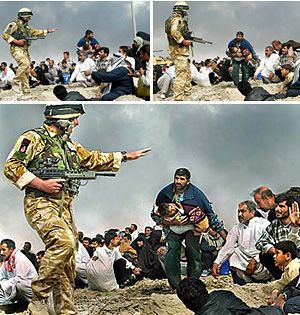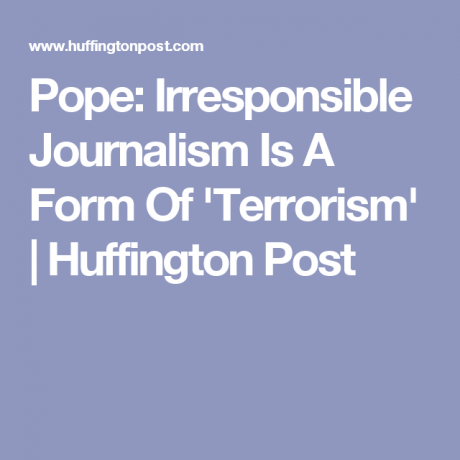With the revoking of Rappler’s license to operate as a business, “opposition” were hopping mad about it being a dictatorship move and suppression of freedom of speech. But those are not what happened. What happened is that one of the real threats to press freedom and freedom of expression was brought to account. I’m not sure why not being allowed to operate as a business is a threat to freedom, as Rappler can always operate as a blog. Being a business does not necessarily give legitimacy or credibility. But even news agencies and media companies can be threats to freedom all over the world because of two things.

1. Irresponsibility and Incompetence in Journalism
Not too long ago, an ironic moment was Rappler itself hosting a forum with some journalists giving talks. Several of them said an even greater threat than media killings is irresponsible journalism. Rappler seemed to have dismissed their guests’ advice.
One of those mistakes was claiming that the attack on Resorts World Manila last 2017 was by the terrorist group Daesh (more popularly known as ISIS). It later turned out that the culprit was just one man, a civil servant disgruntled by gambling losses at the hotel. It has been said that people who were trapped in the hotel got wind of the rumor that it was an ISIS attack and panicked, contributing to their being more easily killed. This would place responsibility for causing unnecessary panic on Rappler’s shoulders.
We can learn from some media mistakes abroad as well. Among them was media (both traditional and Internet) getting suspects wrong – and thus, inconveniencing or harming innocent people. An example as cited in my source for this part of the article was how media kept on reporting and naming suspects of the 2013 Boston Marathon Bombing, only that none of them were the ones later found guilty – the Tsarnaev brothers. After the 2001 Antrax attacks (when anthrax pathogens were spread through infected letters mailed to people), a New York Times columnist identified a researcher named Steven Hatfill as the possible culprit. Hatfill filed a defamation suit, and FBI investigations cleared him of the crime.
Another related issue is when media goes in bed with political sides, or partisanship. Rappler is thought to have been doing this with Aquino-aligned vested interests since since its start. But before that, American journalists and writers were employed by the U.S. Central Intelligence Agency (C.I.A.) as spies and shills. This is revealed by Watergate reporter Carl Berntstein and inJoel Whitney’s Finks: How the C.I.A. Tricked the World’s Best Writers.
On another thing. As I mentioned before, one issue with journalism is the concept of gatekeepers. Editors have to pick news to feature and throw the rest to the cutting room floor. The original reason is that news broadcasts have limited time to air. These days, however, there’s reason to suspect that selection is done with deliberate picking of the more sensational items. I am reminded of Dick Stolley’s rules for People Magazine. As a business, the magazine doesn’t have to really care about people, but just sells copies, using the sensationalization based on Stolley’s rules.
Another good example, as I mentioned before, was the Filipinos bar fracas. This was raised by a Philippine Star article, the author of which claimed that the Filipinos chocolate bar composition of being “brown ouside, white inside” was an insult to Filipinos. So local politicians decided to ride on this and attack the Spanish chocolate company, and we know how that foolishness turned out.
Let’s also use an infamous photo example from abroad. Anyone recall Brian Walski? He was the photographer who edited a photo in Iraq that totally changed the context, for the reason that it would “look better.” It ran on the paper he was working for, but the editors later learned about the photomanipulation. That cost him his job. It might bring to mind the recent “Pieta” photo by Raffy Lerma in the Inquirer, which isn’t photomanipulated, but it doesn’t stick to just reporting the facts, and instead gives it unnecessary dramatization that tries to influence the reader – a no-no for journalistic ethics.

Because of these mistakes and betrayals by members of the press, people are getting distrustful of mainstream media, and would rather trust “direct channels” like the Internet. They don’t even bother to check if what they see on the Internet is true or not. To them, anything but mainstream news is more trustworthy. Fake news spreads easily because mainstream media, wittingly or unwittingly, aids in making people want it.
2. Who Owns Media
The Center for Media Freedom and Responsibility and the Media Ownership Monitor both mentioned that a major threat to free expression in the Philippines is the nature of media ownership. Most of the owners are politicians or politically-aligned big businesses. This would undermine the press’s role as truthseekers or defenders of freedom of speech, and the press instead becomes a tool to serve vested interest agendas.
Not only do will the journalists’ output be highly biased or slanted, but they can also be used to attack people. Journalists have been responsible not just for mistakes, but for deliberate actions of trying to ruin people and mislead readers. For example, Rappler reporters and allies behaved more like shills than reporters. On the side, I also suspect that the old urban legends (such as the Bongbong Marcos we see now actually being a clone, Agapito Flores inventing the fluorescent lamp, a Filipino inventing the moon buggy, etc.) were sideline projects of journalists in those days.

Indeed, one of the points made in many books these days about journalism (such as Robert Atschull’s Agents of Power and Gadi Wolfsfeld’s Making Sense of Media and Politics) is that most media companies are owned by businesses with questionable agendas. Omidyar Network’s involvement in Ukraine and other attempts to destabilize governments has been widely discussedand can’t just be shaken off as “fake news.” But it is only the tip of the iceberg.
This is why the discussion of “control” in the Philippine Depositary Receipts of Rappler is important. The nature of that control, if it could only be known, would likely reflect self-interest at the cost of truth and true respect for others (aside from violating the law). But even without foreign aid, there are Filipinos would stop at nothing to be dictators over the country, while painting those who counter them as the “evil ones,” using the media.
The real threats to journalism in the Philippines are not from outside, but within. Journalism is not an industry free of corruption; it is rife with such, which even Singaporean figure Lee Kuan Yew mentioned. Indeed, the real threat to press freedom is the abuse of it, and demonstrating to people that you don’t deserve it. We readers should hold media companies to account and challenge them to do shape up. Of course, in the end, people will believe what they want, and the important thing about real freedom of expression is that it allows even individuals to differ from what the established organizations report.

No comments:
Post a Comment